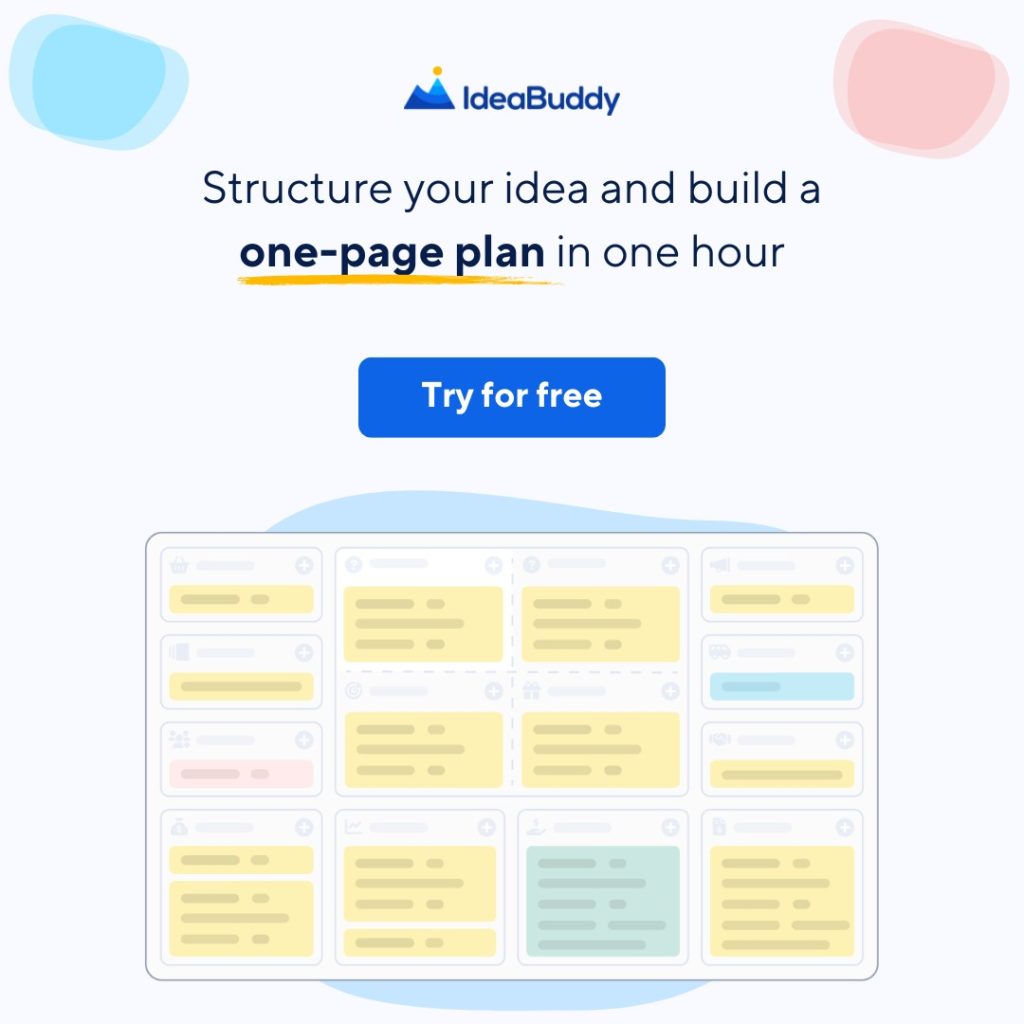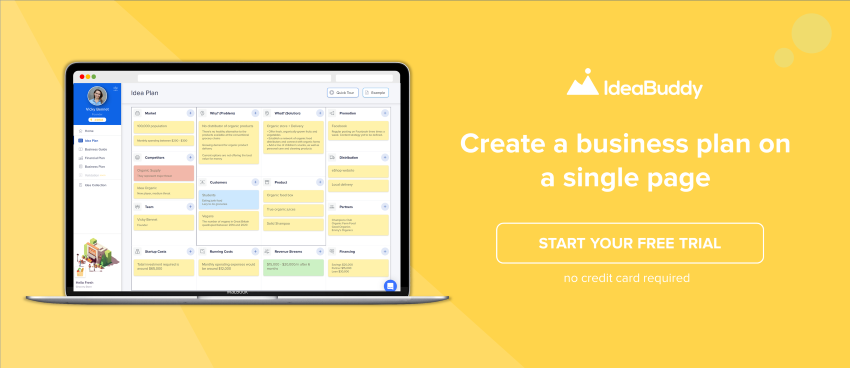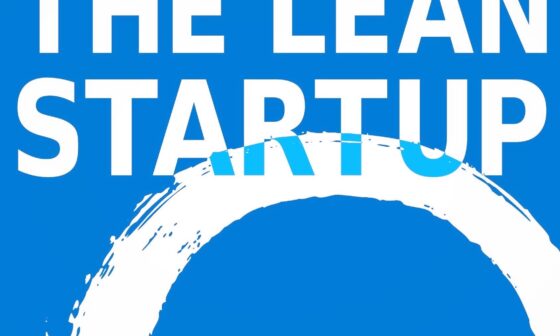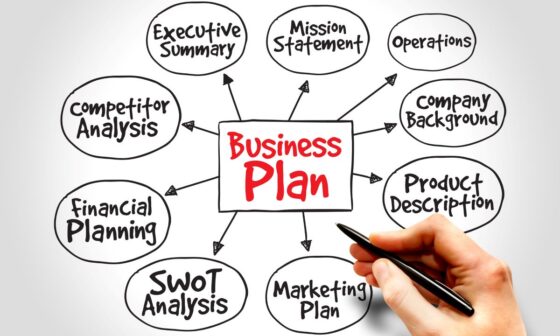Writing an old-school business plan can be painful, so we’ve put together a quick guide where we’ll teach you how to make its simplified version, a one page business plan.
So, in the next five minutes of reading, you will learn the following things:
- What is a one page business plan?
- Why it can be better than a traditional business plan
- What templates to use
- What information should you include in each of the sections
Now, without further ado, let’s dive right into it!
What is a one page business plan?
It’s a great tool for the earliest stages of your business because it helps you structure your thoughts and brainstorm your business ideas with partners, friends, and fellow entrepreneurs.
Also, you can explain on a single page what your product portfolio will be, how you will handle distribution and sales, how to prepare a market analysis, and how to select the right brand strategy.
In a nutshell, your one page business plan should explain:
- Who your customers are?
- What their problems are?
- How you can solve them?
- Who are your competitors?
- How can you set yourself apart?
- Who is on your team?
- How will you make money?
- What are the costs you anticipate?
Basically, it should cover all the same points as a full-length business plan, but in a condensed format.
The advantages of a one page business plan
It’s possible to boil everything down to a single page if you’re economical with words.
It will help you to map out your idea in under an hour, and explain your business model to the potential investors. If they like what they see, it will make them want to read the full-length version.
As we’ve just covered, a one page business plan makes it more likely that investors or banks will give you the time of day. One page is a quicker read than a pamphlet – although you will need a comprehensive business plan!
In the meantime, there are other advantages to a one page business plan that will come in handy. So read on, if you’re still not convinced that you can work magic with a single page.
Advantage #1 Condense your thoughts
It’s easy to get carried away when you are dreaming about your future business. A one page business plan will force you to condense your thoughts and formulate them as clearly as possible.
Advantage #2 See the big picture
You’ll cut out all the fluff when you’re limited to one page. That automatically makes you look at the big picture. And that will also help guide your decisions when you put your plan into action.
Advantage #3 Build a business model
It will help you to identify all the internal and external factors that form the building blocks for the business model that can tell everything about the business, like the product, target customers, competition, or any other element of your business.
Popular one page business plan templates
You know why it’s a good idea to write a one page business plan, and you could now open a blank Word document to get started. But why do that when there are ready-made templates?
Let’s have a look at some of the popular one page business plan templates below.
One Page Plan Template: Idea Plan
Idea Plan is created by the IdeaBuddy team, and it is inspired by more popular business model templates, like Business Model Canvas and Lean Canvas.
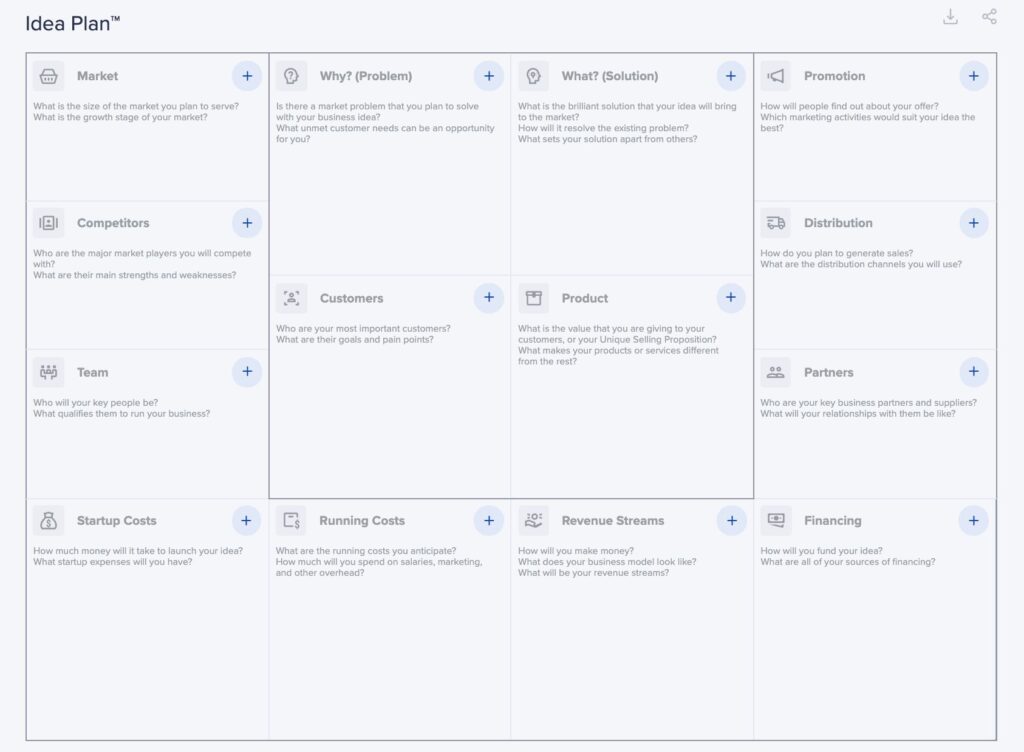
What makes it unique, and why is it more practical than the other one page plans?
It is very well organized, easy to understand, and it can be used by people who are not experts in business planning. Also, it has templates for the most popular business ideas.
The story starts from the inner, core blocks.
There you are defining the problem/solution and product/market fit that together represent your value proposition, or what makes you stand out from the rest.
Then you are moving on to the remaining blocks in order to build your business model and also to understand the external business elements, like competitors and market conditions.
Get started IdeaBuddy for free and create your one page plan in no time!
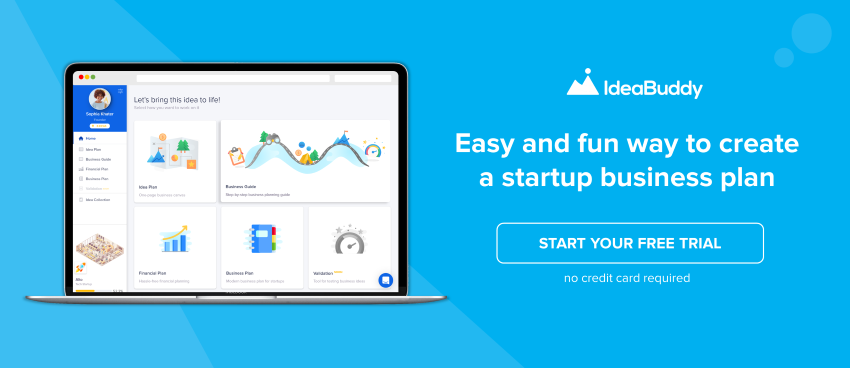
One Page Plan Template: Business Model Canvas
Strategyzer is the team behind Business Model Canvas (BMC), which is a strategic tool for sketching, visualizing, analyzing, and pivoting business models.
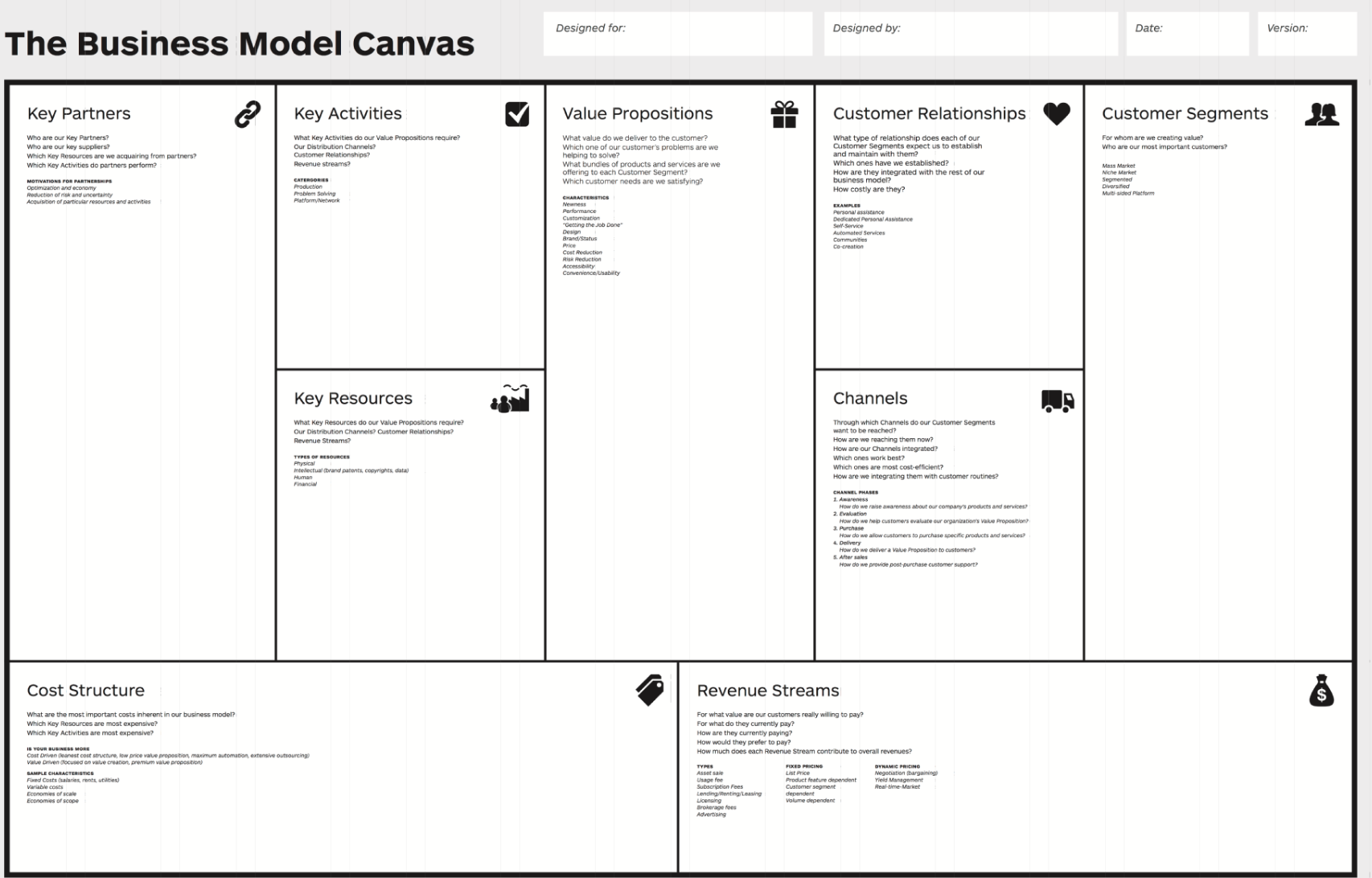
This is the most popular one page business plan template and is has nine building blocks. These blocks allow you to map existing business models, design new ones, and manage a portfolio of models.
One Page Plan Template: Lean Canvas
Lean Canvas was created by Ash Maurya, and it represents an adaptation from the original Business Model Canvas, inspired by the book Lean Startup by Eric Ries. This one page business plan can help you deconstruct your idea into its key assumptions.
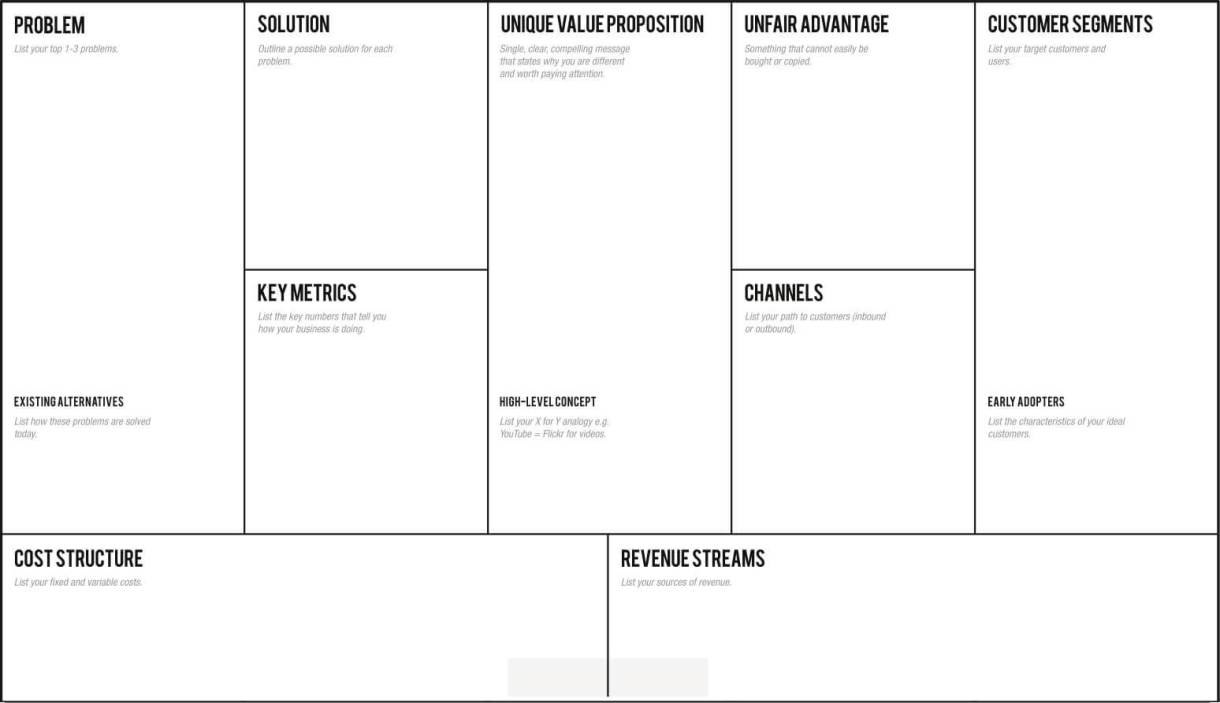
What’s so special about this template is that it follows the problem-solution approach, and it’s more suitable for startups and entrepreneurs.
Sections Of Your One Page Business Plan
Hopefully, you’ve picked a template that looks visually appealing and suits your specific needs. Now it’s time to fill it in with all the information we mentioned at the beginning of this blog post.
1. Market needs
You should describe the market needs right at the beginning of your business plan. Your entire business idea relies on solving a specific problem, so make sure you describe it clearly.
2. Business solution
Once you’ve described the problem, it’s time to explain how your business is going to solve it. Whether you want to design a product or provide a service, this is where you sell it to the world.
3. Competition
Chances are that you’re not the only one who wants to solve that particular problem. Make sure you analyze your direct and indirect competition so you know what you’re up against.
4. Target market
Who has the problem your business wants to solve? Where are they in the world, what do they do, and what are their greatest hopes and worst fears? Describe your ideal customer in detail.
5. Sales and marketing
It’s not enough to know who’s interested in what you sell. You also have to sell it to them. Make a plan for how you want to promote your product or service and convert people into customers.
For example, are you going to use email newsletter software to create appealing newsletters and communicate over email? Or do you want to take the social media route and build an audience there? You can also create a combination of channels that works for you.
6. Budget and sales goals
You need some money to get this baby off the ground. So what’s your startup budget and how do you plan to spend it? More importantly, how much do you plan to sell and over how long?
7. Milestones/roadmap
Your business will (hopefully!) evolve over time as you build a reputation. What does the future look like? Create a roadmap with milestones to mark significant progress along the way.
8. Team summary
No matter how awesome you are, you’re only one person. It’s good to have a team to help you out. Who are they and what do they bring to the table in terms of skills and experiences?
9. Key partners
Are you selling a product? Then who manufactures it, who distributes it, and who promotes it? You should list your key partners, without which your business can not exist.
10. Funding needs
Finally, we’re at the bottom line… literally. Make a list of people or resources you need but don’t have the capital to afford without the help of outside investment. Specify how much you need.
. . .
Start writing your one page business plan
Congratulations! Now you know why you should write a one page plan, where to find some great templates, and what you should include in it.
But knowing is only half the battle.
Now it’s time to put your knowledge into action and write the damn thing! Fortunately, you don’t need to go back to Google for a solution to that problem – you’ve already found it.
IdeaBuddy is an excellent platform you can use to go from zero to a fully-fledged business. And the best part? You can write your one page plan completely for free!
So what are you waiting for? Start writing your one page business plan today, it’s much easier than you think!

